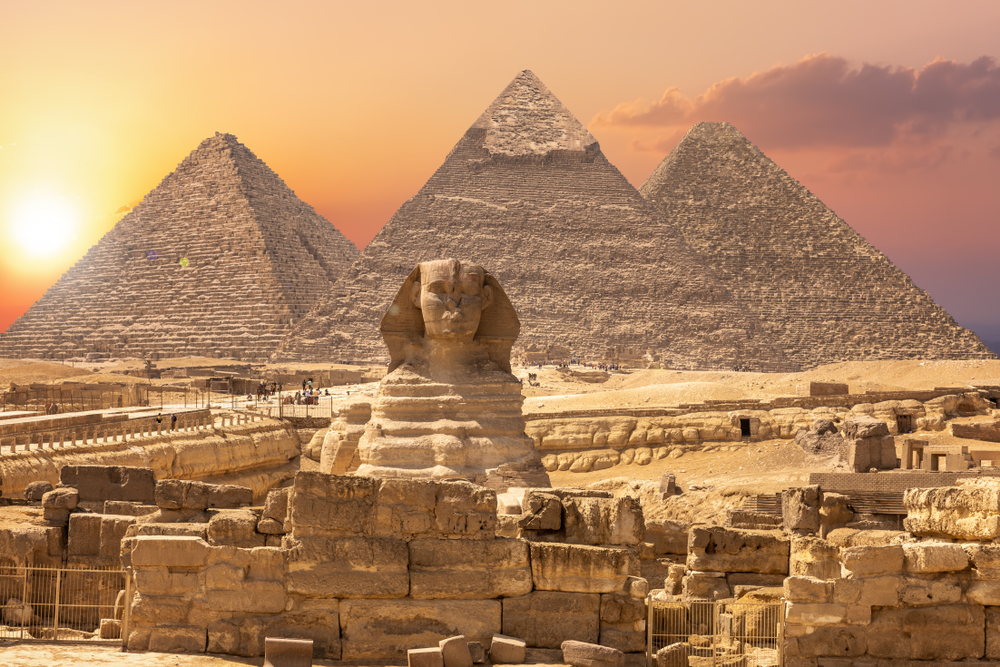5 triumphs of Ancient Egypt
5 triumphs of Ancient Egypt
5 triumphs of Ancient Egypt
-
Hannah
-
Hannah

Here are five triumphs of Ancient Egypt.
Astronomy
The Egyptians were stargazers and they built an impressive knowledge of constellations and stars. Constellations feature in many tombs we have discovered, on the ceiling as the heavens above the deceased.
Astronomy was not just about learning; it helped to determine timings. The orientation of the Pyramids, for example, was determined by the position of the North Star, and the New Year was timed with Sirius rising in July.
Eventually, the ancient astronomers found five planets in the sky (which they called ‘stars that know no rest’). These were largely associated with Horus, god of the sky, and were what we call today Mercury, Mars, Jupiter, Saturn and Venus.
Construction
The Pyramid of Giza is the only Wonder of the Ancient World to have survived, and that is a testament to the amazing architecture and construction skills of the Ancient Egyptians. It is the largest pyramid of Ancient Egypt, at 146.5 metres high, and for some 3,800 years it was the tallest structure made by humans in the world – made entirely of very heavy blocks levered into position.
The pyramids were a feat of not only engineering but of labour. In the case of the Great Pyramid, the ancient Greek historian Herodotus wrote that it took 100,000 workers 20 years to complete the structure; another ancient Greek historian, Diodorus Siculus, and the Roman writer Pliny the Elder reckoned it was more like 360,000 workers. The construction of pyramids using stone was an invention of the Egyptians; the Third Dynasty king Djoser built the first stone building in the world – a step pyramid (still standing today).

Step pyramid of Djoser
The design of the Pyramids also shows us how advanced the Egyptians were in mathematics.
Anatomy
Thanks to their work mummifying the dead, the Ancient Egyptians developed a new and very illuminating understanding of the human body. In the 5th century BC, they discovered blood circulation and how to take a pulse. The Edwin Smith Medical Papyrus, dating to 1550 BC, contains clear clues that the Egyptians knew that the heart pumped the blood (‘It is there that every physician… places his fingers… he feels something from the heart’) and that the blood was pumped to organs (‘It speaks forth in the vessels of every body part’.)
The creation story of the god Khnum reveals the Egyptian knowledge of bodily systems. Khnum was believed to have created humans, first establishing the blood to flow over the bones, then attaching the skin to the skeleton, then putting in the respiratory and digestive systems.
With this knowledge, the Ancient Egyptians developed a scientific approach to medicine, with hospitals and surgery.
Female empowerment inspirations
Women of Ancient Egypt were by no means equal to men and had few freedoms. Ahmose I, founder of the 18th Dynasty, helped royal women a little when he introduced the title God’s Wife of Amun, reserved solely for a royal woman and passed down to her daughter. Finally, a woman could wield some real power. She was granted an agricultural estate and her own staff, which she leveraged to make her own income – useful for bribing officials to gain more power. These wives were buried in chapels at Medinet Habu.
A few strong royal women made their mark. Queen Tiye, Great Royal Wife of Amenhotep III, was the first queen to come out of the background and participate in ceremonies and rituals with her husband. Some women ruled: Queen Ahhotep of the 17th and 18th Dynasties ruled as queen regent while her sons were too young for the job, and an inscription at Karnak speaks of her military accomplishments, including ‘pacifying Upper Egypt and expelling her rebels’. The second female pharaoh of Egypt, Hatshepsut of the 18th Dynasty, was a formidable woman who ruled the country not as a queen but as a king.

Hatshepsut: The female king of Egypt
These early feminists must have been an inspiration to Cleopatra, who in the first century BC became the last ruler of the Ptolemaic Kingdom, fighting against her own brother, Ptolemy XIII, to keep her power.
Longevity of the civilisation
The Classical Greek Civilization lasted roughly 350 years. The Roman Empire spanned just over 500 years. The Ancient Egyptian civilisation lasted 3,500 years. Really, that says it all.
Photo credits: 1) AlexAnton/Shutterstock.com; 2) naipung/Shutterstock.com; 3) mareandmare/Shutterstock.com.